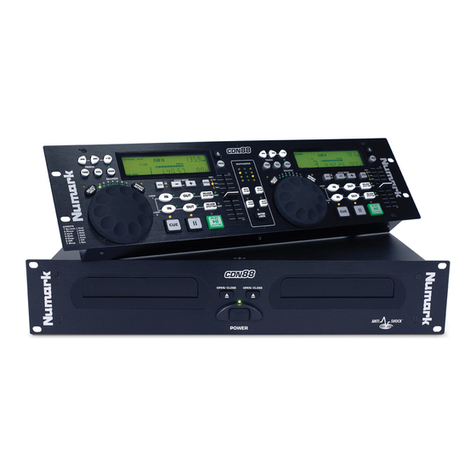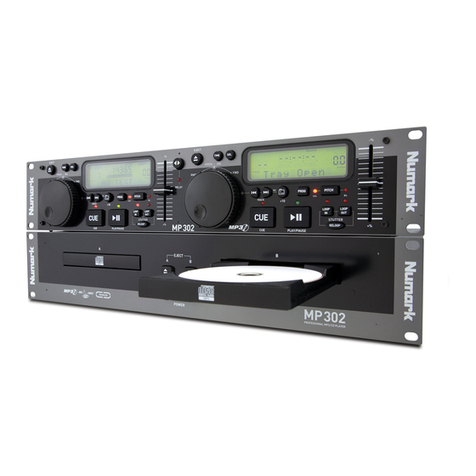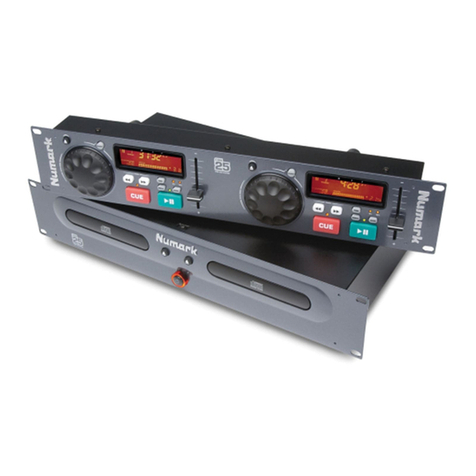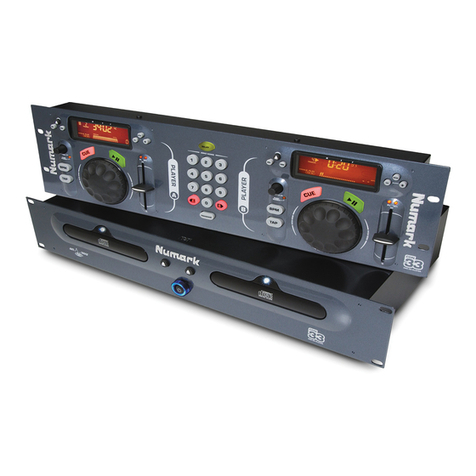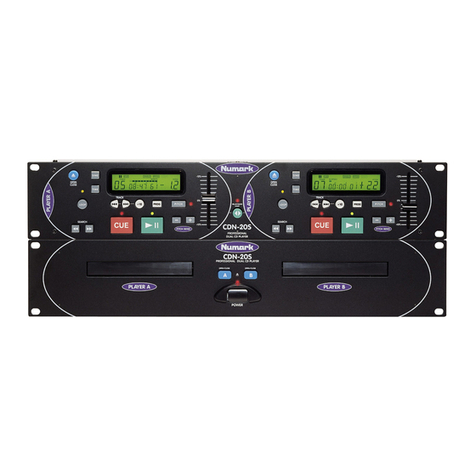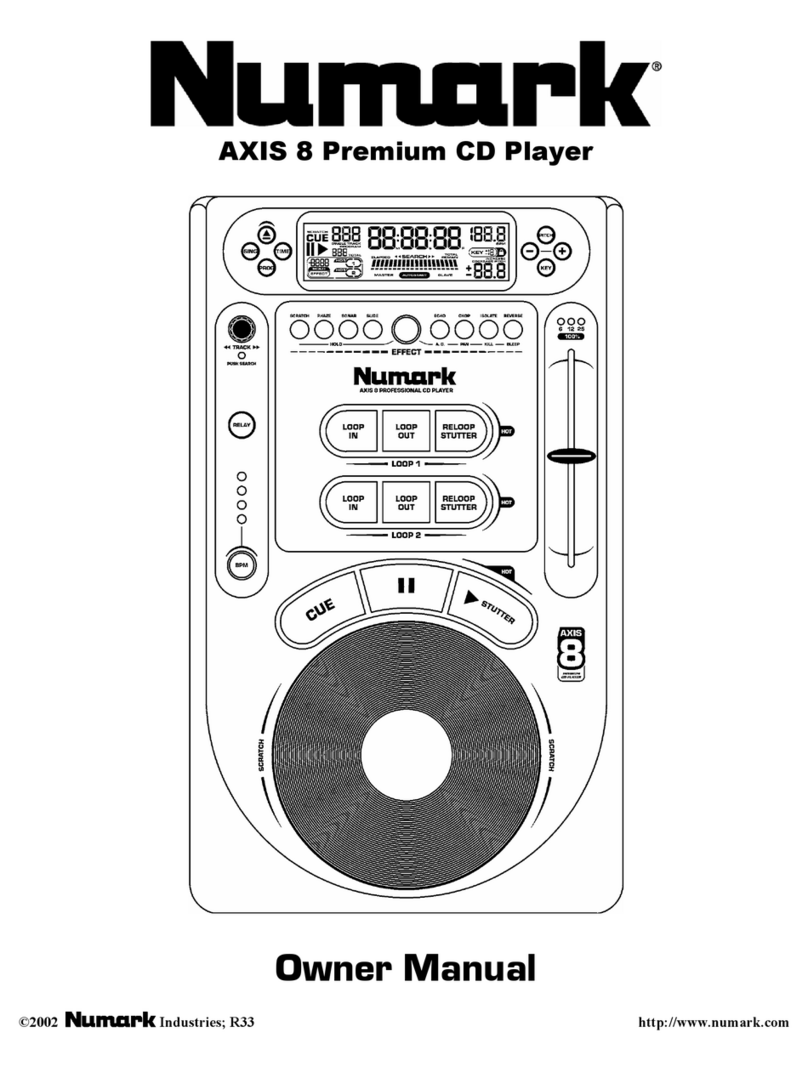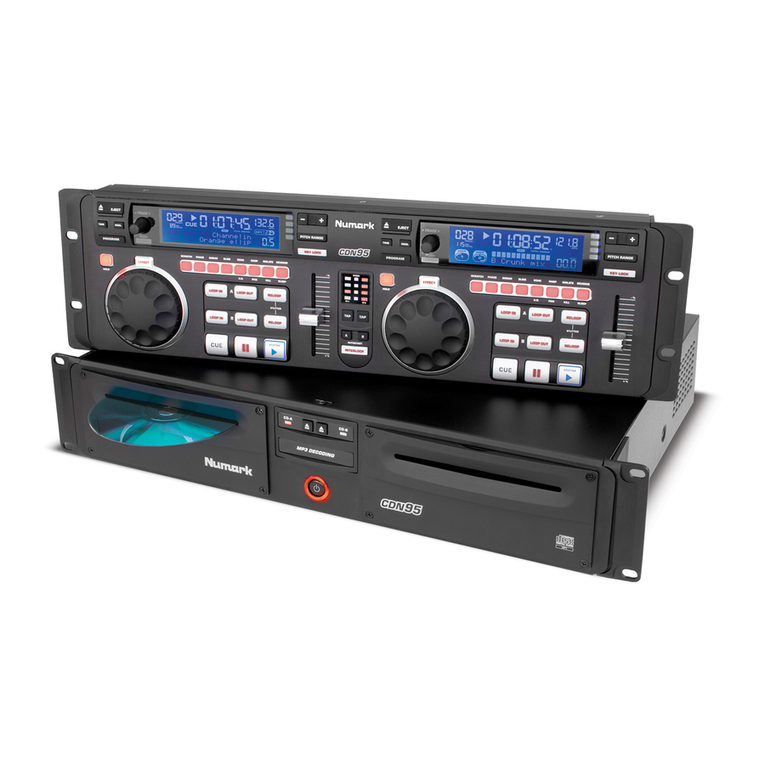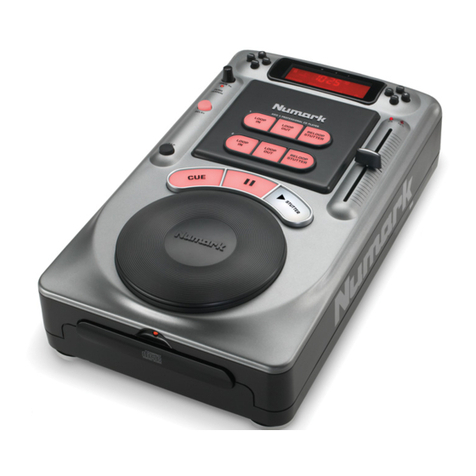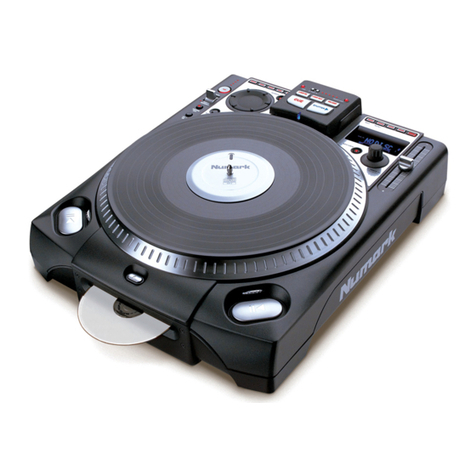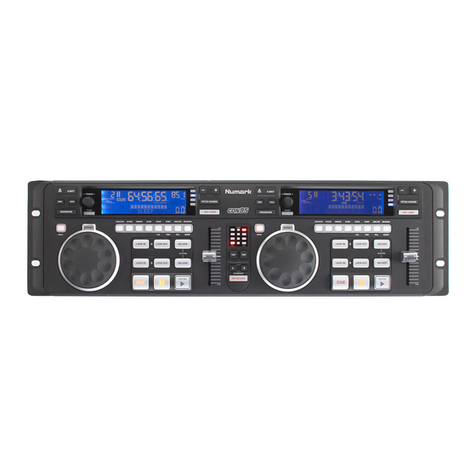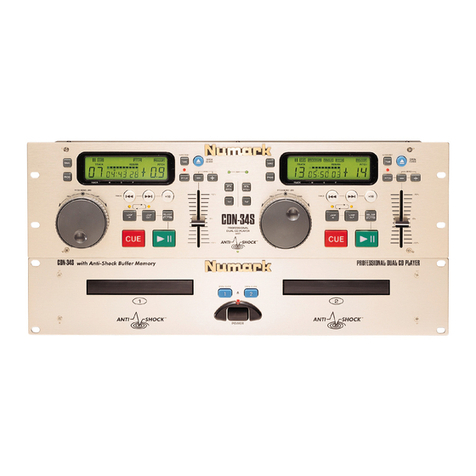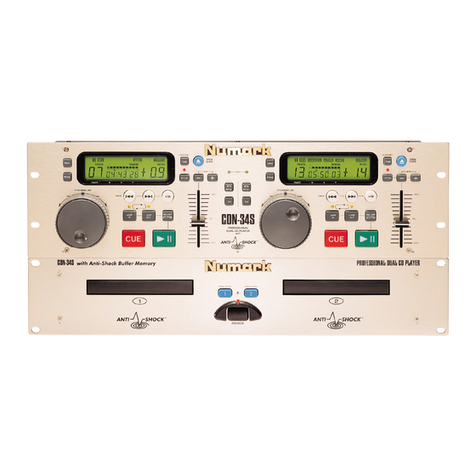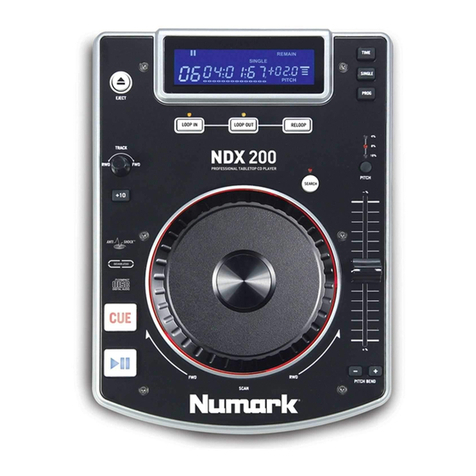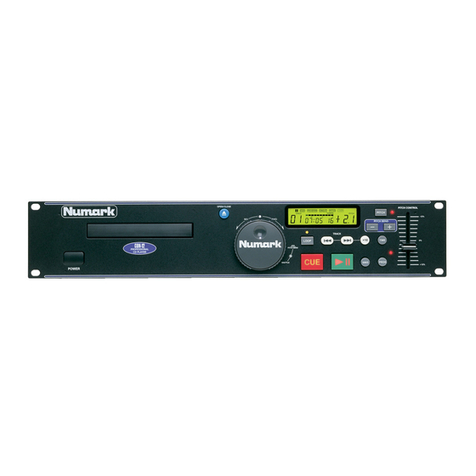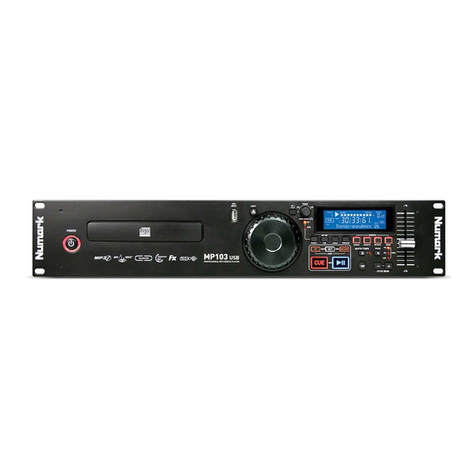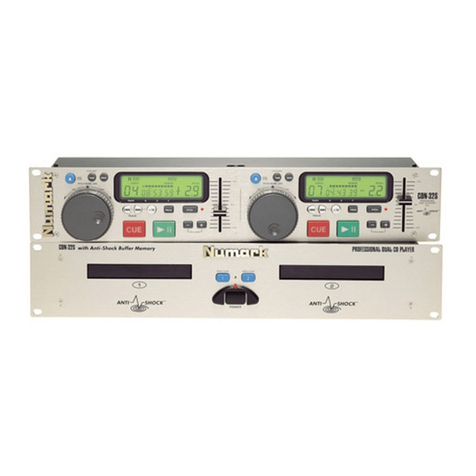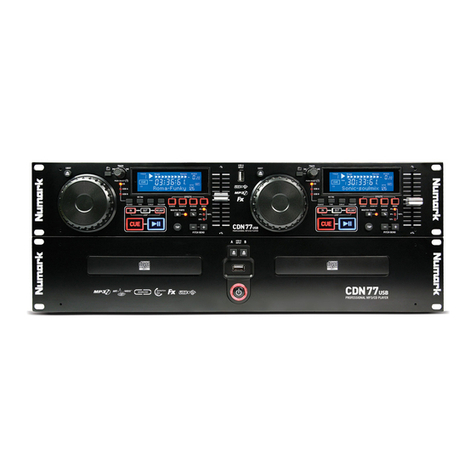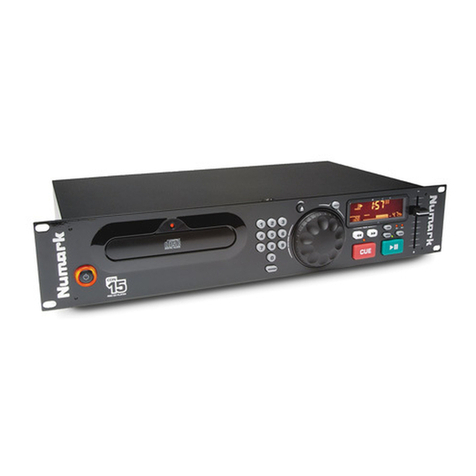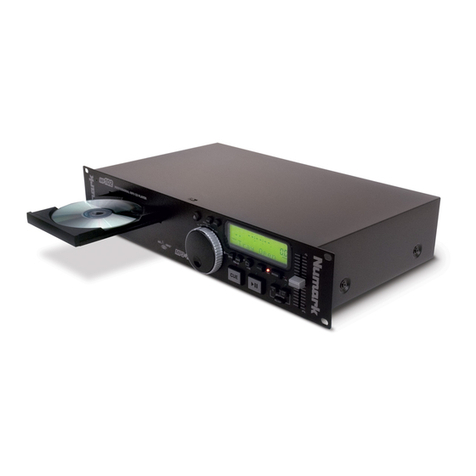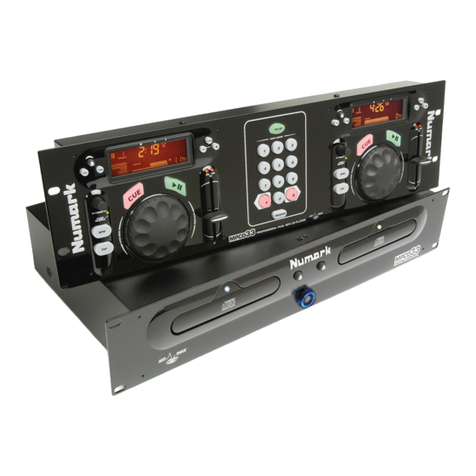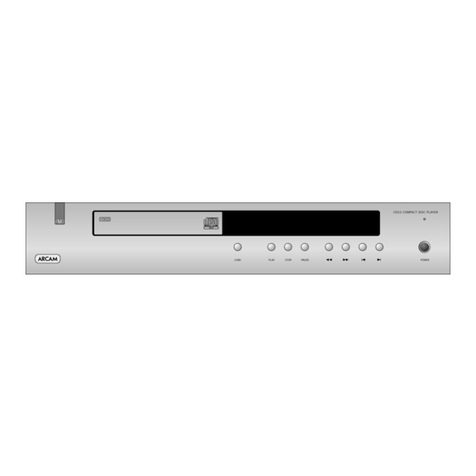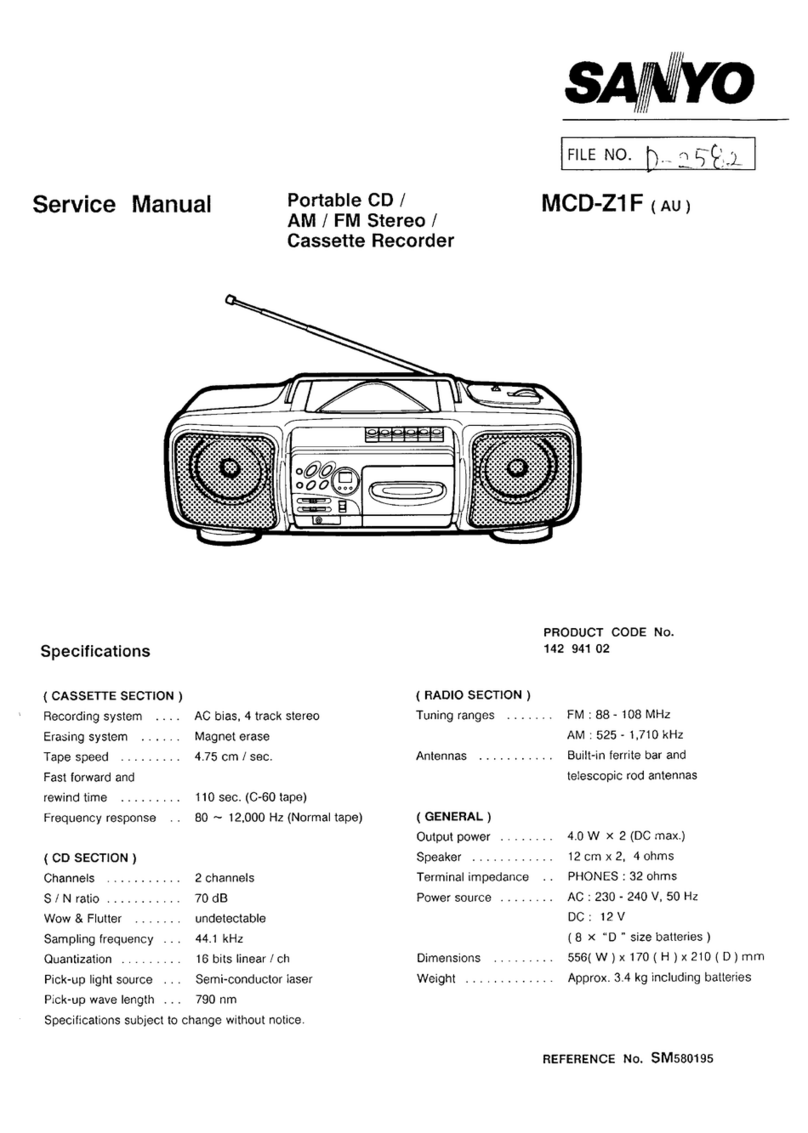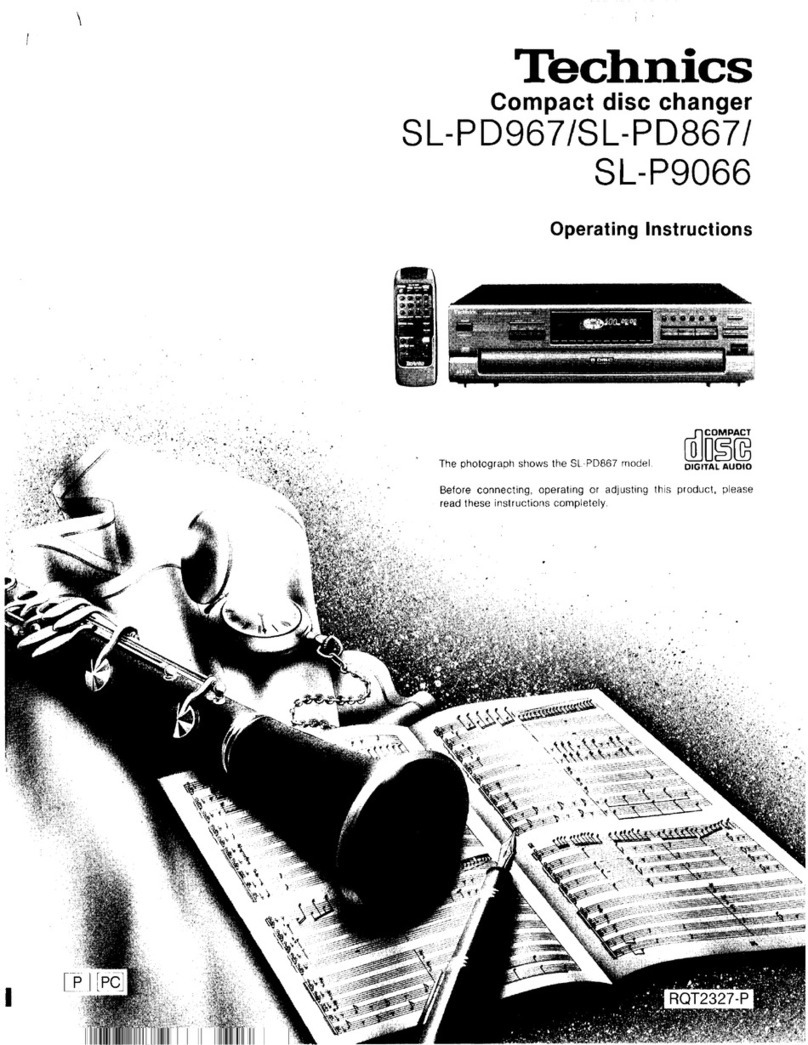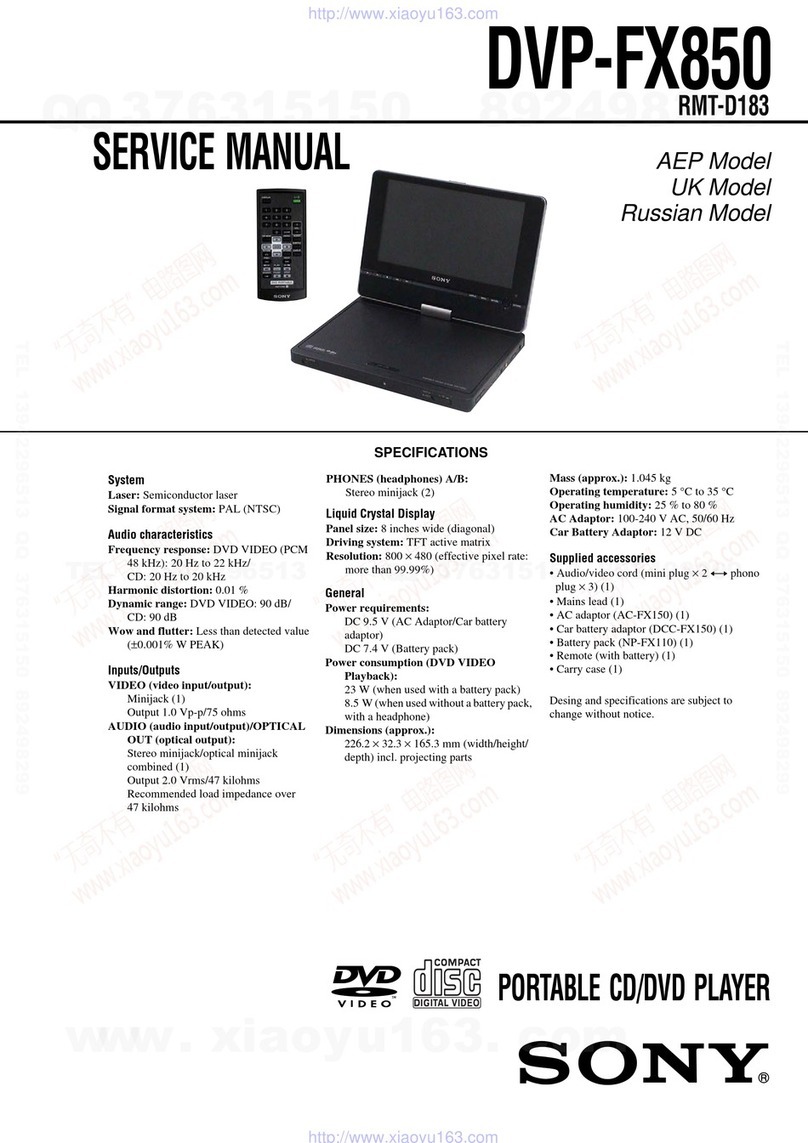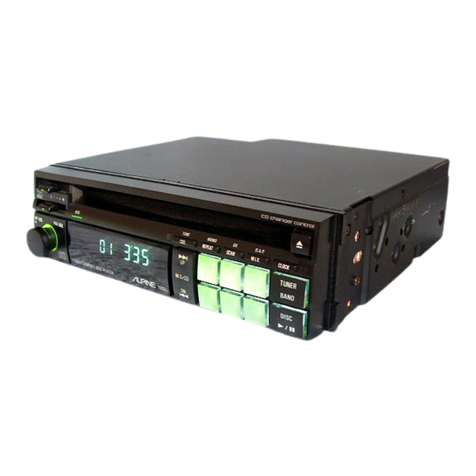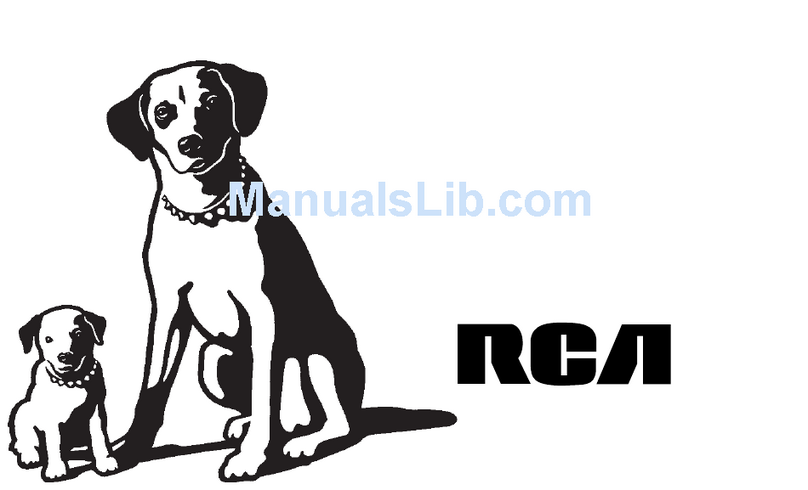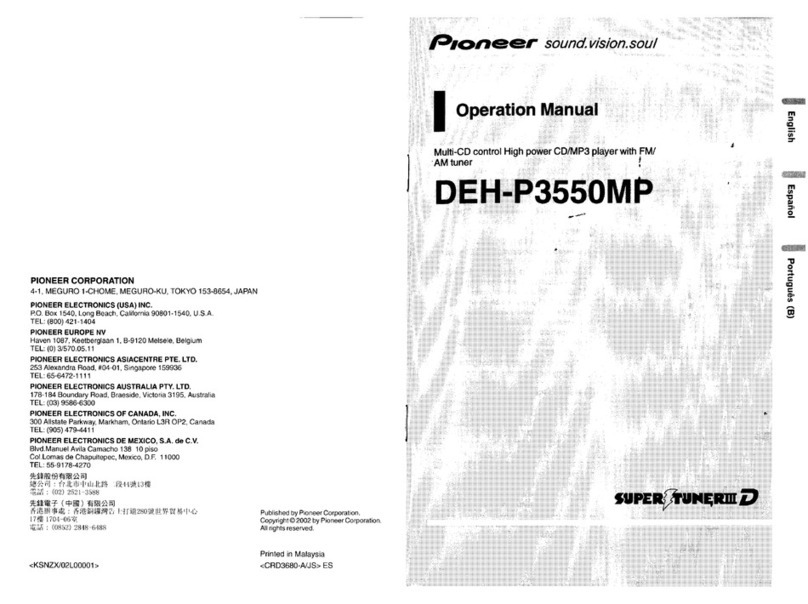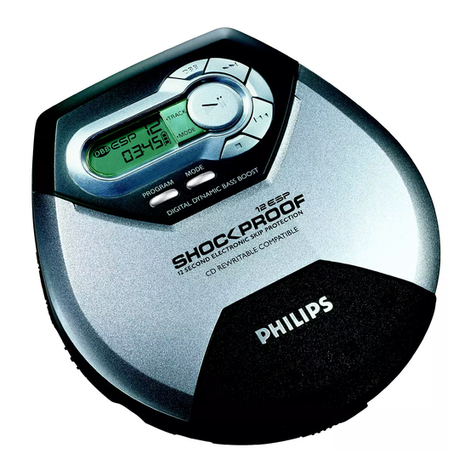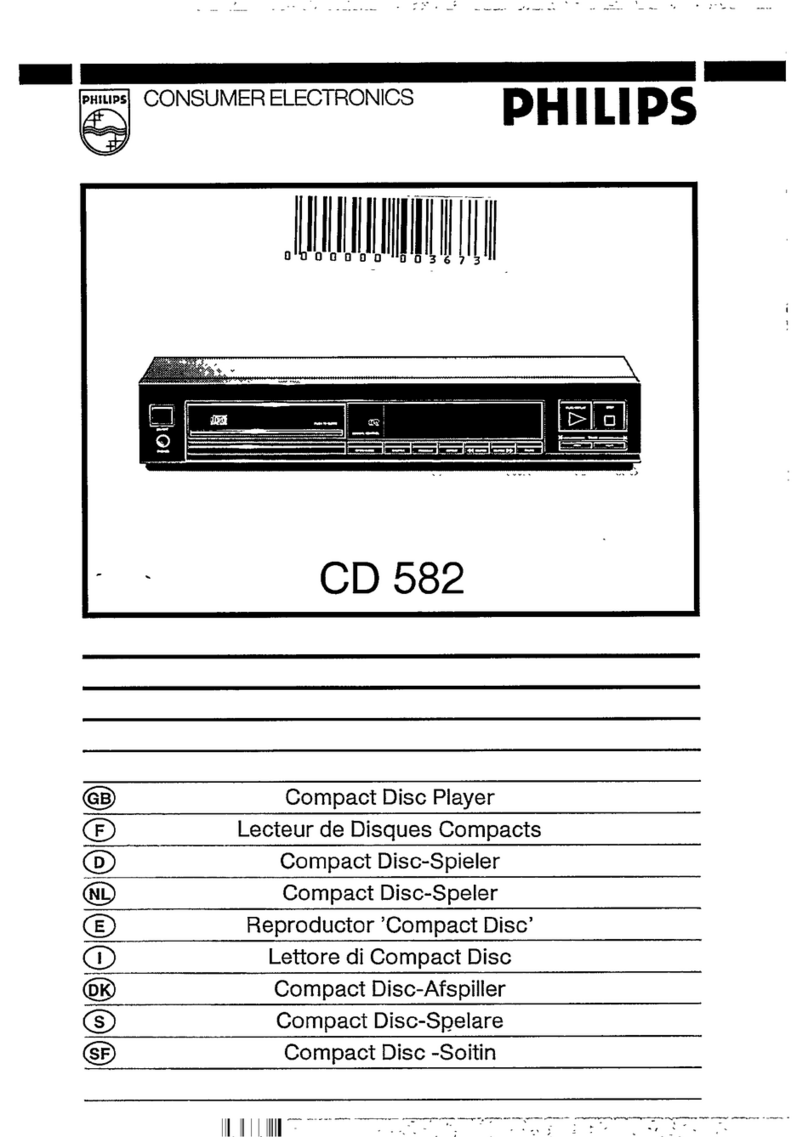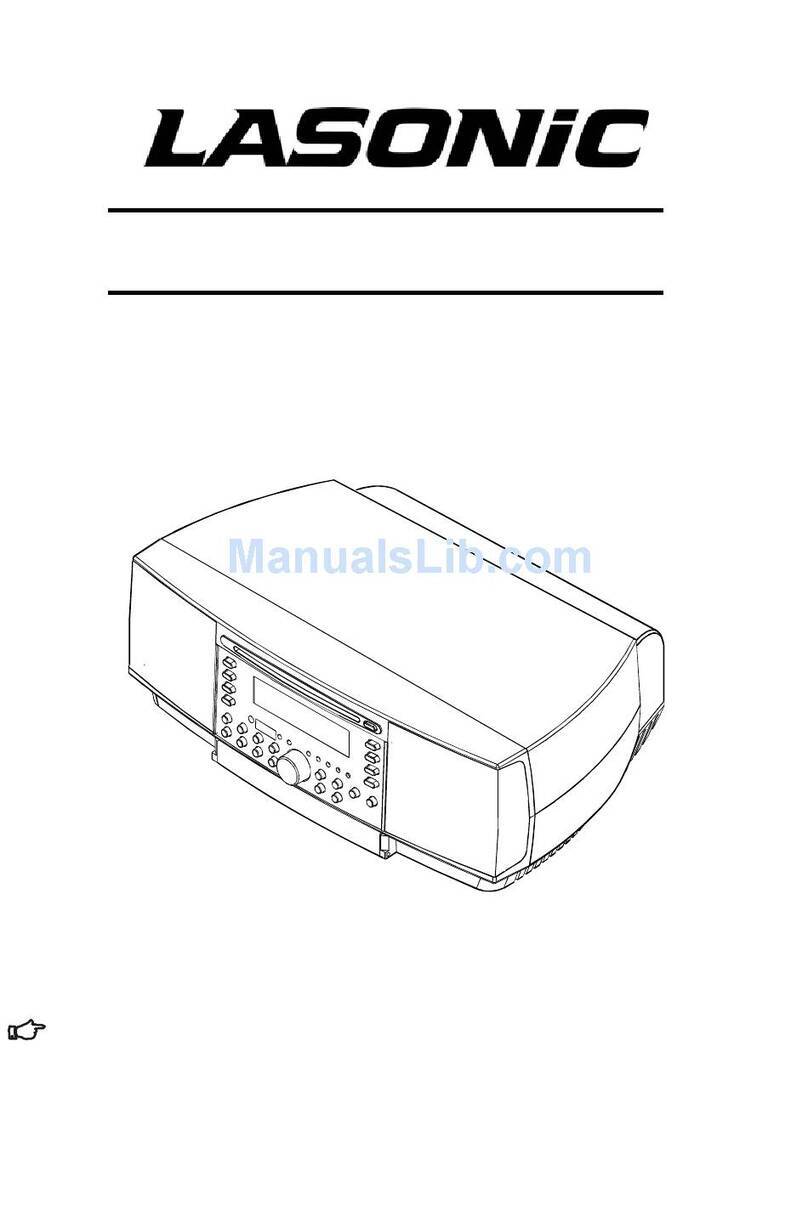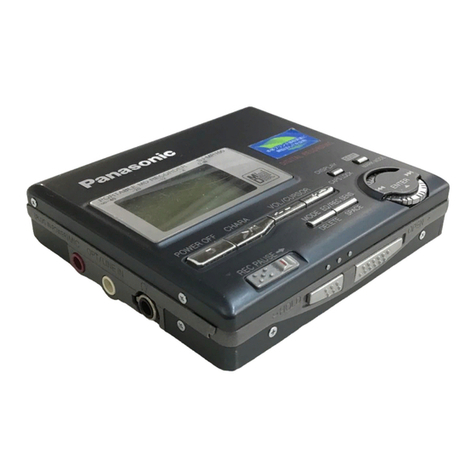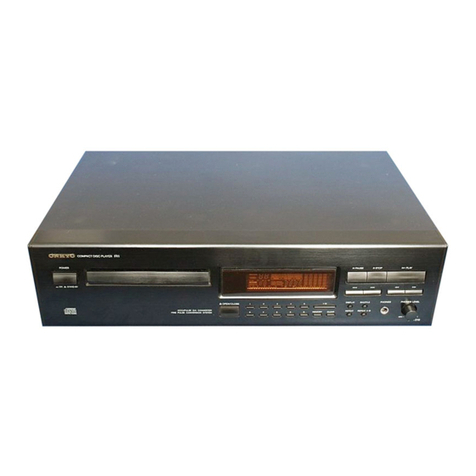11. PITCH-aktiviert und stellt ein die Granzen für
den Pitch-Kursor.
12. KEY-benutzt für verschiedene
Schlüsselkontrolllen.
13. -,+ -funktionieren als Pitch Bend und
kontrollieren die Schlüsselfunktionen und Pitch.
14. PITCH SLIDER-kontrollieren die totale
Geschwindigkeit der Musik.
15. PITCH RANGE LED-zeigt den kurrenten
Intervall des Pitch-Kursors
16. EFFECT BUTTON-benutzt für den gewünschten
Effekt zu determinieren.
17. EFFECT HOLD-benutzt um die Effekte in
alternativen Positionen einzustellen
18. LOOP IN-–benutzt um die Punkte Loop in und
sttuter zu wählen.
19. LOOP OUT-benutzt um die Punkte Loop out
und Loop fertig zu wählen.
20. RELOOP/STUTTER-benutzt für wiederholtes
Play (Stutter) vom Loop in –Punkt, repetant
eine vorherige Einstellung, und Hot Start.
21. RELAY-benutzt um das Play zwischen den
angelegten Einheiten zu abwechseln.
22. BEAT SYNC mit MARCHING BAR GRAPH-
verfolgt den Rhytmus (beat) und mißt die
Position der Musik
23. CD Illumination Light (Vorseite der Einheit) –
beleuchtet das CD Tablett und das CD wenn
es geöffnet ist.
24. CD Drawer (Vorseite der Einheit) –setzen
Sie die CD die Sie hören wollen (Play) hier
hinein. Diese Einheit wurde projektiert um
CD aus dem Handel zu benutzen und korrekt
eingebrannte und abgeschlossenen
CDR.Wegen den Variierungen der
Spezifikationen der verschiedenen Brenner
(Burner) von CD, und den CD-s, können
einige selbstgemachte CD-s nicht richtig
funktionieren.
25. Power Switch-starten Sie und stellen Sie die
Maschine mit dieser Taste. Die Einheit muss
immer mit deser Taste abgstellt werden bevor
jede Versorgungskabel herausgenommen wird.
Typisch wird empfohlen dass der CD Player vor
den Verstärker gestartet wird und abgestellt
nach den Verstärker, um zu vermeiden dass
ein Audiogipfel durch die Ausstattung
übertragen wird.
26. IEC Power Plug Connector -stecken Sie den
gelieferten Versorgungskabel hier ein.
27. Voltage Selector -stellen Sie diese Taste zur
Spannung von Ihrem Standort ein.
28. RCA Audio Connectors -schließen Sie den CD
Player zum Mixer aus diesem Austritt mit
Linienniveau ein t.
29. Digital Output -Format ist Typ 2, Form 1,
bekannt auch als S/PDIF (Sony/Phillips Digital
Interface Format). Um den digitalen Austritt zu
aktivieren, drücken Sie „Prog“ gefolgt von
„Pitch“. Dieses gibt die Möglichkeit dass die
digitale Audioinformation übertragen wird.
Bestimmte CD-s haben auch Kodeinformation
in der originalen Audioaustrit wie CDG grafisch,
CD für Karaoke.
30. Relay Connector-wenn Sie die Relay-Funktion
benutzen wollen stecken Sie die
Stereokontrollekabeln von 3,5 mm hier und
dann in die andere Einheit. Die Kabel muss
stereo sein damit die Einheiten entsprechend
funktionieren
31. Remote Start Connector ––benutzen Sie
diesen Connector um ihn im Mixer oder
Fernbedienung kompatibel Fader Start zu
stecken. Diese Funktion ist immer aktiv.
a. um diesen Connector zum Starten von
Fader zu benutzen, schließe den gelieferten
Fader Kabel Start zu einem Mixer
kompatibel Fader Start an. Jedes Mal wenn
Sie den Crossfader des Mixers gegen die
Einheit bewegen, wird dieser automatisch
beginnen zu singen. Wenn Sie den Fader
zur anderen Seite bewegen, wird die
Einheit aufhören. Bewegen Sie den Fader
zurück gegen die Einheitsseite, dieser wird
wieder zu singen beginnnen.
b. Die Fußschalter können auch angeschlossen
sein dieser Jack-muffe für kreative
Mixentechniken und können aus den
meisten Musikgeschäften erhalten werden.
Die Anschließmuffen sinf häufig ¼“ und ein
Adapter von 1/8“ ist nötig für den
Anschluss. Es gibt auch zwei Arten von
Fußschalter die mit diesem Connector
funktionieren können. Die erste ist eine
Schaltertaste typisch ON/OFF und wird
benutzt im allgemeinen um die Kanäle bei
den Gitarrenverstärker zu wechseln. Die
zweite Taste ist ein momentaner
Fußschalter der gewöhnlich benutzt wird
damit als Sustain-Pedal für die Instrumente
mit.
32. MIDI IN Connector –dieser Port ist für das
Erhalten von Signale MIDI (Musical
Instrument Digital Interface) von anderen
MIDI Vorrichtungen als CD Player,
Keyboards, Drum Machines
(Trommelmaschinen).
33. MIDI OUT Connector –dieser Port ist für
die Übertragung von Signale MIDI (Musical
Instrument Digital Interface) zu anderen
MIDI Vorrichtungen
